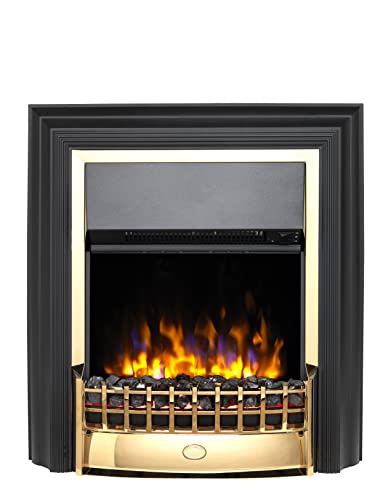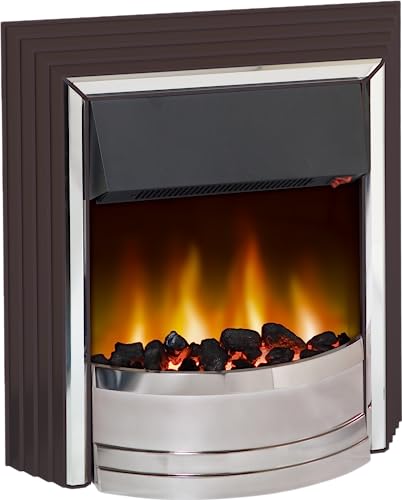Fireplaces And Stoves
Add a reviewOverview
-
Sectors Telecommunications
-
Posted Jobs 0
-
Viewed 554
Company Description
5 Laws Everybody In Fireplace Should Know
What Are Fireplace Accessories?
Many homes have fireplaces that provide warmth and comfort all day and night long. They also provide value and aesthetics to the house.
 Whether your fireplace needs an overhaul or basic repairs, these projects can be done by homeowners. However, certain tasks that require gas service must be left to trained professionals.
Whether your fireplace needs an overhaul or basic repairs, these projects can be done by homeowners. However, certain tasks that require gas service must be left to trained professionals.
The Hearth
The hearth is the non-combustible flooring of the fireplace or wood stove. It may be a whole elevated area or just the foundation upon which the fireplace is set. The word “hearth” is often used to refer to the entire area of the fireplace, including the firebox, the raised floor and mantel as well as the chimney. It is crucial to remember that there are specific fire safety regulations regarding the construction of the fireplace as well as its accessories. Check with your local authority for more information.
Hearths are generally constructed from brick, stone or cement. They can be an important focal point in any room. They are designed to guard against accidental fires that could be caused by stray embers or logs. They can also be used to store fireplace tools as well as wood and other equipment.
Archaeological studies have revealed that hearths were important to the early human era. Many believe that hearths supplied food, light, warmth and even protection.
A hearth can cause serious health problems if it is not maintained properly. Smoke exposure increases blood nitrogen levels which blocks red blood cells (methemoglobinemia) from delivering oxygen into the tissues. At high levels, it can cause nausea, dizziness and loss of consciousness.
Hearths were originally made of rock, but are now more often made of concrete or brick. They are available in various shapes and sizes. Some cooking fireplaces have hearths that cover the entire wall and others are smaller and purely decorative pieces that only cover the fireplace’s opening. The material used in a hearth can greatly influence its appearance, cost and resistance.
The Surround
A fireplace surround, also referred to as a “mantel”, is the frame that sits above the hearth that enhances the atmosphere of an area. Besides its aesthetic value, it is also a functional element since it keeps combustible substances away from the fireplace and reflects heat into the room. It can also be used as an area to display household items such as mirrors or paintings.
Based on the type of fireplace, there are several material options for the surround. Certain surrounds are not combustible while others must comply with local and federal fire codes regarding clearance distances from combustible objects.
Popular choices for the surround are brick, stone, or concrete. Some stone surrounds are carved with decorative features, such as bevels and bolection moulding. The stone surrounds could include plinths or cornices. These elements can give a house an elegant appearance that is in harmony with the style.
Plaster is another alternative. It is an amalgamation of sand cement and water and can be shaped to match any style of architecture. For example, a plaster surround can complement a Mission-style house.
Tile is the final option for a wall. Tiles come in a variety of colors and designs. It can be used to accent the surround or be extended across the entire wall to create an impressive focal point. It is a fantastic choice for homes in modern style.
The surround is one of the first things guests notice when entering a living space. It is important to select an item that sets the mood for your space and to increase the value of your home.
The Firebox
The firebox is the space behind a fireplace opening where the fire can be created and maintained. The firebox is typically enclosed by a chimney, allowing smoke to escape. Traditional structures usually burn wood, but some can also use gas, such as natural gas or propane.
The firebox is where combustion occurs and should be maintained in order to ensure safety and effectiveness. The firebox is comprised of several essential components. This includes the grate, the fire poker, and the air damper.
In addition to keeping the firebox and its lining in good shape It’s also important to clean your fireplace frequently. Since it’s constantly exposed to extreme temperatures, the interior will be covered in soot and ash that need to be cleaned out. To clean it, employ a wire brush or scraper to get rid of the caked-on soot and ash.
For longevity and durability, it’s a good idea to line the inside of your firebox with steel slag. These metals are resistant to corrosion and won’t get rusty. They also offer more even heat distribution and last for longer.
Finally you can add some visual flair to your fireplace by using decorative fire logs or lava rocks. Some people prefer modern decorative glass instead. Just be sure that whatever you’re using to make your fireplace is UL certified for safety. This includes the fireplace as well as any accessories and decorations you’ll add to it.
The Burner
Burners are a popular way to add heat and aesthetics to any space. They are available in a variety of sizes and shapes which makes it easy to locate the ideal one for your home. Some come with remotes, so you can control the flame from anywhere in the room. Fire-burners can be used indoors and outdoors, as they are safe.
There are a variety of burners, each having their own pros and cons. Some are more expensive than others, but all offer a range of benefits for your home. Some are safer than others, and some can be used without or with a chimney. Whatever type of burner you select, make sure to adhere to the directions in the product’s manual. This will ensure that the burner is properly installed and is in conformity with all local and state regulations.
While burning wood is the most traditional method of enjoying the flame of a fireplace, it’s not always the most practical. The smoke and soot generated by burning wood can be hazardous to you and your family. Ethanol fires are on the other hand produce just water vapor and minimal CO2 which is a lot more sustainable.
A fireplace can also be helpful in the case of a power outage. In winter, a lot of snow and ice may accumulate on trees, which can cause them to fall, and even knock down power lines that hang below. If the power supply in your house goes out, you can use the fireplace to stay warm and cook food. This is a great solution for homeowners who are prepared for the unexpected.
The Flu
The flue is an internal tunnel in a chimney that brings smoke and gases from your fireplace away from your house. It’s also a crucial element of a secure and efficient fire. A flue generates a wind that draws air into the fire. This lets the fuel burn completely and reduces smoke.
The drafting of the flue prevents the hot gases produced by the fire from billowing back into your home, Www.Fireplacesandstoves.uk and instead carrying them out to the outside where they can cool. This regulated venting is what keeps carbon monoxide out of your home.
Check your chimney regularly for any leaks or blockages. The flue pipe (a steel tube or duct running through the middle of the chimney) should be cleaned using special cleaning chemicals and equipment. This includes a metal brush and the use of a drill with a masonry bit and masking tape and a utility knife for removing any creosote or soot that is stuck to the walls of the flue pipe.
The flue should be kept closed when you aren’t using your fireplace helps keep conditioned indoor air from escaping. It also prevents rain or wind gusts from entering the chimney and damaging your fireplace wood stove, or gas furnace.
The damper can be closed and opened with a latch or handle. It is located at the top of your fireplace, near the flue tile or pipe. It is designed to keep the flue open when a fire is burning however it should be shut when not in use to help reduce your energy bills and keep animals and precipitation from your fireplace.
